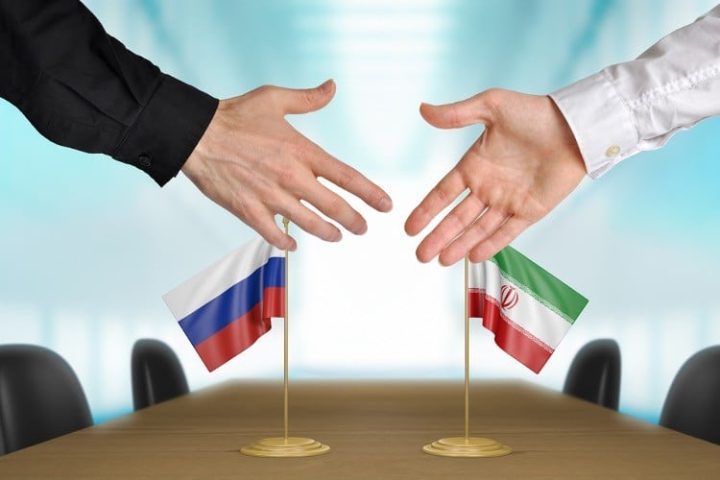
Russia continues to further cement its influence abroad, expanding its economic and political reach even deeper into the Middle East with strategic investments.
In major news, Moscow has now become the number one foreign investor in Iran, according to the latter’s deputy finance minister, Ali Fekri.
Fekri stated that Russia “had brought some $2.7 billion worth of investment to two petroleum projects in Iran’s Western province of Ilam in the past 15 months,” accounting for 45 percent of all foreign investment secured by Tehran within that time frame.
The other top foreign investors in Iran for that reporting period were China, Turkey, Afghanistan, and the United Arab Emirates. Fekri pointed out that Beijing had decreased its spending in Iran in 2022, saying, “China has invested nearly $185 million in Iran over that period, which we are not happy with given the amount of negotiations and meetings we had.”
Per the deputy finance minister, during the last 15-month period, Tehran failed to meet its goal of $10.2 billion in foreign investment, making it only to $5.95 billion.
Between expanded trade agreements and oil-pipeline contracts, Iran and Russia significantly increased their work together in 2022 in order to get around sanctions that western powers have slapped on both nations.
In total, there was a trade turnover surge of 15 percent between Russia and Iran last year, which came out to a sum of $4.6 billion.
The collaboration was punctuated by the signing earlier this month of a free-trade memorandum between Iran and Russia’s Eurasian Economic Union (EEU) — a move anticipated to grow the relationship between the two countries.
Vyacheslav Volodin, speaker of Russia’s State Duma, called the mutual trade “extremely important in the conditions of sanctions pressure on our countries.”
Praising the free-trade memorandum, Volodin asserted that Moscow and Tehran should work on improving collaboration in finance and banking, and that they can achieve this, in part, by using national currencies more often in settlements.
“It is important to use settlements in national currencies more actively. Much has already been done in this regard — now the share of the ruble and the rial in mutual settlements exceeds 60%. The work on the joint application of national payment systems is being completed. This will minimize the impact of sanctions, but also, of course, address issues related to mutually beneficial cooperation,” said Volodin.
Russia also notably increased its trade with China last year. As seen in a Wall Street Journal report, Moscow ramped up its importation from China of technologies key to the war in Ukraine. Per data which came from the D.C.-based Free Russia Foundation, China’s purchase of Russian goods more than made up for the trade Moscow lost due to western sanctions — essentially rendering those sanctions ineffectual.
“As the U.S., EU, the U.K. have all scaled back operations with Russia, China has emerged, by a wide margin, to be Russia’s most important trade partner,” the Free Russia Foundation’s report reads.
The Journal further notes:
China has become a supplier of some key technologies that can have a military purpose despite the Western sanctions. China sold $3.3 million worth of unmanned aerial vehicles, or drones, to Russia last year, according to the data. The report noted that drone deliveries to Russia continued in November and December from the United Arab Emirates, Hong Kong, China and Singapore.
Russia last year increased its imports of semiconductors and microchips by around 34%, with China emerging as the major source. That has helped Russia increase its overall import of chips to $2.45 billion in 2022 from $1.82 billion in 2021, despite Western sanctions targeting that trade.
Russia and China have spent years forging stronger economic ties, including a $55 billion gas pipeline and Russia’s increased usage of China’s yuan. The economic relationship has deepened even as long-simmering concerns remain among officials in Moscow that Russia could become captive to China’s economic orbit.
The information on which the Free Russia Foundation based its analysis came from a third-party data provider, and it was compiled in partnership with Madrid-based IE University by a team that included Russian economists and former Russian officials.
The data indicates that trade between Moscow and Beijing rose by approximately $27 billion in the period from March to September 2022 compared to the same period the year before. In total, trade between the two giants has now reached $99 billion.
A great deal of this is owing to larger sales of crude, a result of Russia sending more of its product to eastern trade partners such as China, India, and Turkey as western nations have imposed restrictions on the purchase of Russian oil.
Trade has gone both ways. Russia has increased its dependence on Chinese goods, with 36 percent of its imports coming from China during the March-September period. In the comparable period in 2021, Russia’s imports from China were at 21 percent, meaning the figure went up by a significant 15 percent.
This comes as the war between Russia and Ukraine rages on. Western nations have escalated their involvement in the conflict; Joe Biden authorized sending M1 Abrams tanks to Ukraine, while Germany is sending Leopard 2 tanks. That’s on top of all the ammunition, anti-ship, and air-defense systems, and thousands of armored vehicles that the United States and its allies have already sent to Ukraine.
Gradually, Russia and China are building a formidable global hegemony that is taking the teeth out of the western powers’ economic threats and boxing the United States into irrelevance.




